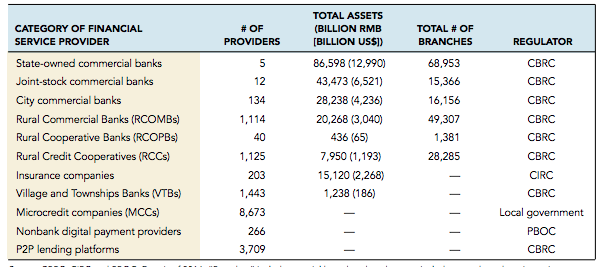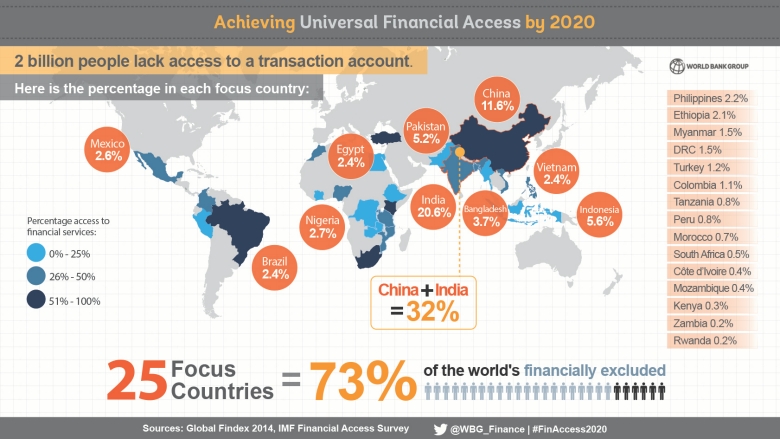
New Report Analyzes China’s Impressive Trajectory Toward Universal Financial Inclusion
by Company Announcement February 19, 2018China has achieved remarkable success in financial inclusion over the last 15 years. Traditional financial service providers have dramatically increased the reach of the formal financial sector, including through the world’s largest agent banking network.
China has also been a leader in the fintech revolution, with new technology-driven providers transforming how Chinese consumers make payments, borrow, save, insure themselves against risk, and invest.
China’s rate of account ownership – a basic metric of financial inclusion – has increased significantly and is now on par with that of other G-20 countries.
A new report examines China’s approach to financial inclusion over the past 15 years. The report – Toward Universal Financial Inclusion in China: Models, Challenges, and Global Lessons – benchmarks China’s progress against peer economies and analyzes key developments and factors in China’s financial inclusion experience. The report also outlines remaining challenges and distills lessons for policymakers in other countries. The report was written jointly by the People’s Bank of China (PBOC) and the World Bank Group.
Overview of Select Financial Service Providers in China:

Source: CBRC, CIRC and PBOC. Data is of 2016. “Branches” includes special branches, but does not include agent-based service points.
The conceptualization and practice of financial inclusion in China has undergone a significant transformation in recent years. Since the early 2000s, Chinese policymakers have prioritized broadening the availability of basic financial products through improvements in credit and payments infrastructure, expanding physical access points for rural consumers, and establishing new types of financial service providers.
National Plan for Financial Inclusion
China has also moved towards a coordinated approach to financial inclusion with the launch of the national Plan for Advancing the Development of Financial Inclusion (2016-2020)in 2015.
Chinese financial sector authorities have also provided regulatory space for innovations in digital finance. China’s fintech industry continues to grow rapidly and now reaches hundreds of millions of consumers with a range of new digital financial products and services, in part due to the use of online, network-based business models to integrate financial services into existing e-commerce or social media platforms.
This ongoing fintech revolution is motivating traditional financial service providers to actively pursue digitally-enabled business models as well.
The report notes that China still faces several key challenges to achieving sustainable and long-term financial inclusion. The country will need to shift toward more market-based, commercially sustainable approaches to financial inclusion.
Chinese policymakers should continue to develop regulatory frameworks and supervisory approaches to effectively manage the risks associated with digital finance. Financial consumer protection risks are particularly important to address, given the limited digital and financial literacy of many consumers as well as the elevated risks that digital finance poses related to data privacy and fraud.
China’s experience provides valuable lessons to authorities in other countries who are fashioning their own pathways toward sustainable and long-term financial inclusion. For example, on the policy side, the prioritization of financial infrastructure development and policy approaches to reaching “last mile” consumers are important lessons that can be drawn from; on the market side, online network-based business models have been a critical factor in the success of fintech in China by leveraging network effects, technology, economies of scale, big data, and cross-subsidization opportunities.

image via worldbank.org
China’s recent financial inclusion successes and path forward are highly relevant to the World Bank Group’s commitment to achieve Universal Financial Access by 2020. The Universal Financial Access goal is to ensure that adults globally have access to transaction accounts to store money and send and receive payments. China is one of the 25 priority countries for the Universal Financial Access initiative.
Article firste appeared on Worldbank , Featured image via Pixabay








